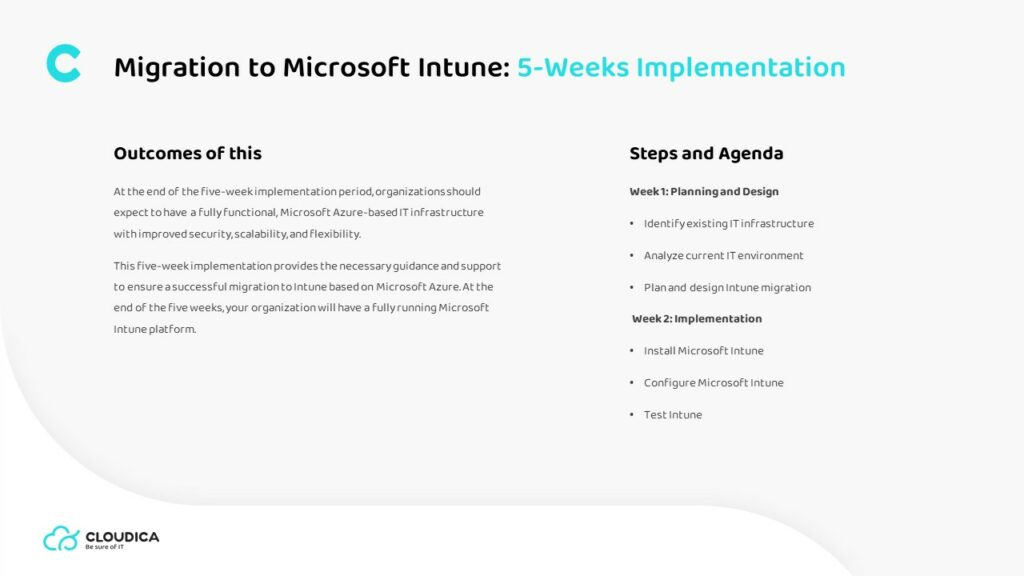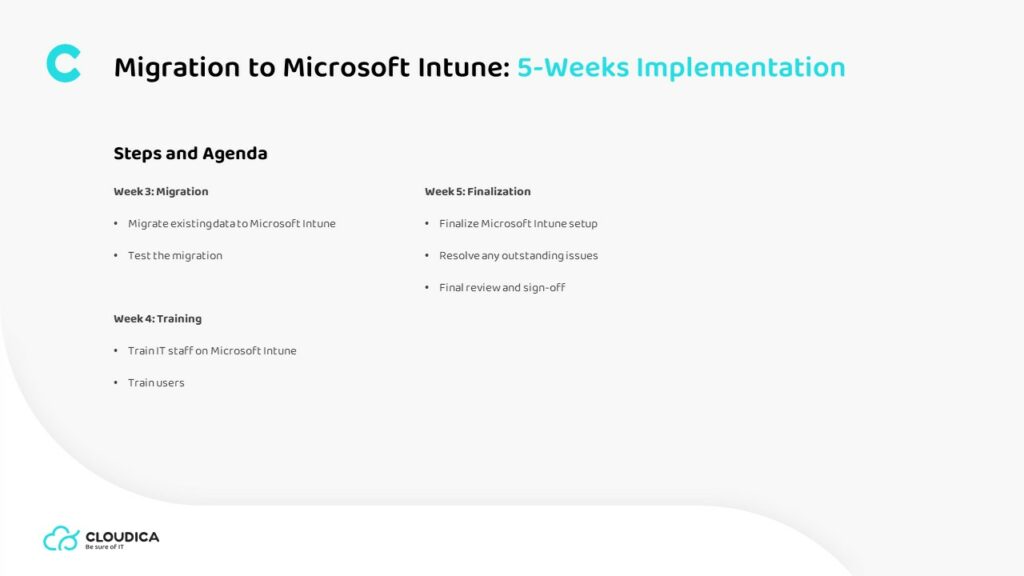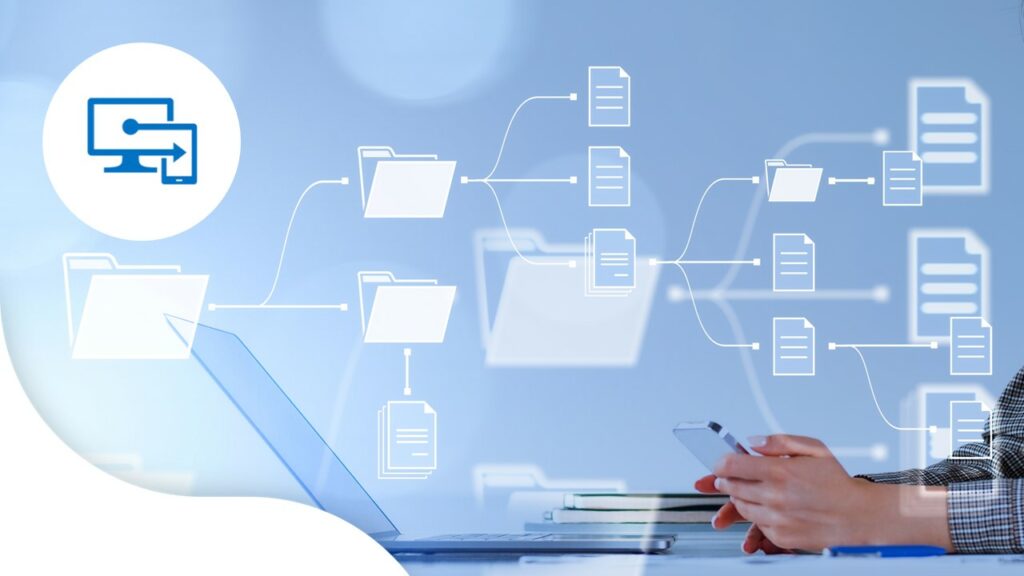What is it?
Cloudica’s service helps organizations migrate their existing IT infrastructure to Microsoft’s cloud-based platform, Microsoft Intune.
What is for?
Cloudica’s 5-week implementation service for Migration to Microsoft Intune is designed to assist customers in getting started with or extending their use of Microsoft Azure. This service provides expertise, capabilities and know-how that organizations either do not have in-house or need to augment. This service is ideal for organizations looking to improve their IT infrastructure by leveraging the cloud-based features of Microsoft Intune to reduce the cost and complexity of their IT systems, as well as increase security, scalability and flexibility of their IT environment.
What are the benefits?
• Reduced cost and complexity of IT systems
• Increased scalability and flexibility of the Microsoft Azure environment
• Improved security of IT systems
• Streamlined access and management of data
• Improved user experience
Outcomes of this
At the end of the five-week implementation period, organizations should expect to have a fully functional, Microsoft Azure-based IT infrastructure with improved security, scalability, and flexibility.
This five-week implementation provides the necessary guidance and support to ensure a successful migration to Intune based on Microsoft Azure. At the end of the five weeks, your organization will have a fully running Microsoft Intune platform.
Steps and agenda
Week 1: Planning and Design
• Identify existing IT infrastructure
• Analyze current IT environment
• Plan and design Intune migration
Week 2: Implementation
• Install Microsoft Intune
• Configure Microsoft Intune
• Test Intune
Week 3: Migration
• Migrate existing data to Microsoft Intune
• Test the migration
Week 4: Training
• Train IT staff on Microsoft Intune
• Train users
Week 5: Finalization
• Finalize Microsoft Intune setup
• Resolve any outstanding issues
• Final review and sign-off
Most popular offerings
Contact
Ready to meet the only technology partner you'll ever need?













